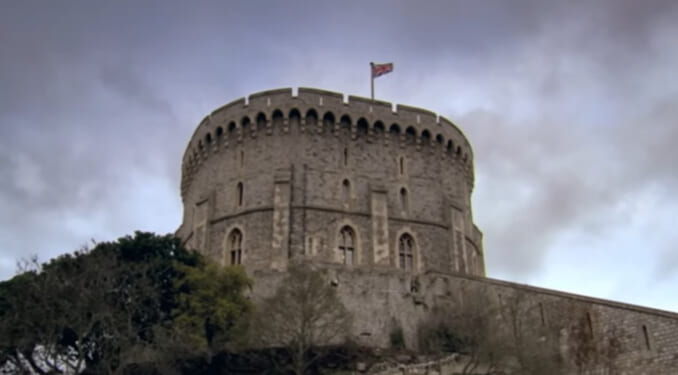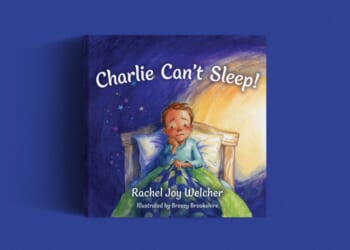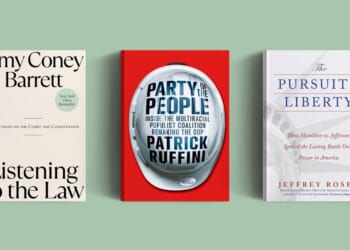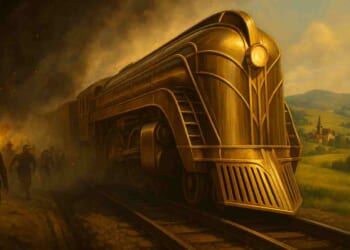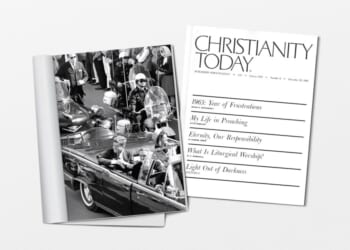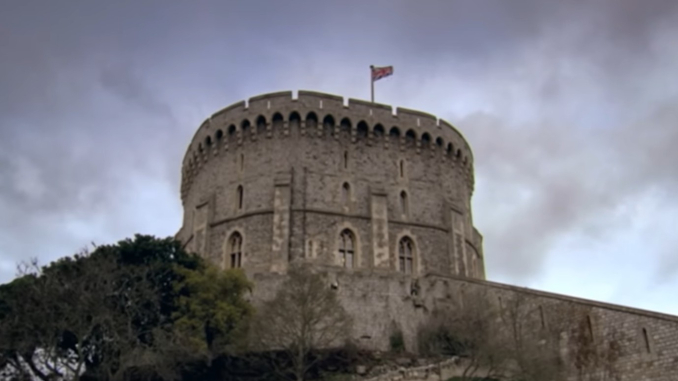
By Antonius J. Patrick
A reoccurring theme among many conservative and libertarian financial analysts is to disparagingly equate contemporary power grabs by governments and/or collusion between states and Big Business, which augment the power of both at the expense of everyone else, with that of feudalism, serfdom, and the medieval era in general.
Click the Link Below to Listen to the Audio of this Article
One recent example of this can be seen in Thomas Kolbe’s article on the financial Internet website “Zero Hedge” entitled, “The Rise of Neo-Feudalism: Germany’s Conservatives Bow to Socialist Wealth Taxes.” The author reports on a debate within German socialist parties about hiking inheritance taxes and the reintroduction of wealth taxes.
While Kolbe understands the stupidity of these plans and calls them “anti-civilizational” and “devastating to capital formation,” which will only further deepen the recession that Germany is in, he compares the proposed tax increases and wealth confiscation to a “neo-feudal apparatus.”
The author should know that inheritance taxes were not a feature of medieval life, but were a prominent plank in Karl Marx’s Communist Manifesto written in the 19th century long after the demise of feudalism. Inheritance taxes have been adopted by nearly all Western nations since Marx’s time and have placed onerous burdens on family-owned businesses and farms causing many to close and liquidate assets to pay the levy.
On broader terms, the level of taxation in the often-maligned Middle Ages was nothing compared to the tax burden that Westerners face today. During the era of kingly rule, roughly up to the French Revolution, overall taxation rarely exceeded 5% of national product, according to Hans-Hermann Hoppe’s Democracy: The God That Failed—The Economics and Politics of Monarchy, Democracy, and Natural Order.
Today, most pay nearly half of their income in a wide variety of taxes—income taxes, sales taxes, inheritance taxes, personal property taxes, and tariffs.
Unlike the modern age, the monetary order of the medieval era was a metallic one. And, unlike the present epoch, all of medieval society—rulers included—were subject to the moral law. An institution like a central bank—which engages in systematic expansion of the money supply (counterfeiting), causes booms and busts, enriches the political class, and impoverishes workers’ wages by debasing the currency—would simply not exist.
When kings tried to do on a limited scale what central banks like the Federal Reserve routinely do on a massive scale, sovereigns were often taken to task. An example of this can be seen in the struggle between Pope Boniface VIII and the French King Philip the Fair at the turn of the 14th century.
In their well-documented battle over the rights of the Catholic Church and that of the secular power, Boniface repeatedly upbraided Philip for his debasement of the currency. Philip, in the pope’s eyes, had “falsified the public money,” and should “withdraw from circulation that counterfeit money” and “restore the property of others.”
Like all tyrants, Philip had an insatiable lust for money and power, as Dom Louis Tosti, one of Boniface’s biographers, describes in History of Pope Boniface VIII and His Times:
And when we consider the laws enacted by him, and the acts of his reign, we find that wearing the crown meant to him no opposition whatever to his absolute and despotic authority.
Unfortunately for European history, Philip won out, and his victory began the breakdown of feudalism and the rise of royal absolutism which eventually led to the totalitarian democratic nation state that Kolbe and others are currently protesting.
While Boniface took Philip to task for his crimes, there is hardly any authority in modern times who will call out central banks for their criminality. Instead, most of the financial press is extremely differential to Federal Reserve officials and treat them with utmost respect, ignoring the fact that they are simply sophisticated counterfeiters.
More importantly, Boniface vigorously denounced Philip for his unjust wars which resulted in the killing of innocents and the “shedding of blood of your people, which does not belong to you.” The wars were not fought in defense of France, but were those of aggression to enhance his power.
In contrast, few today have reproached presidents of the most warlike nation on Earth—the United States—for their killing, destruction, and the untold misery they have inflicted in the seeming endless wars across the world. When has a U.S. chief executive been charged with a war crime for his mass murder?
One of the starkest differences between the modern age and the medieval period is the quality and moral standard of their respective cultures. The Middle Ages were an “Age of Faith,” where the natural law and social order, designed by Providence, were enshrined in the laws, customs, and relationships among its peoples. This, of course, produced social harmony, a respect for persons and property, and a virtuous people.
Contemporary life seeks to overturn and pervert the natural order with the predictable detrimental effects—sexual deviancy, a disregard for authority, infringement of individual rights and that of property, contention between classes. In short, society has been de-civilized.
Ironically, the critics of the medieval era do not see that within that social order lies the solutions to many of today’s crisis. The overarching problem of contemporary life is the centralization of power that lies with governments and their allies in the monetary and financial fields. The Middle Ages were characterized by de-centralization with real institutional structures of “checks and balances” that curtailed power.
Until there is a return to such a world, societal conditions will continue to deteriorate.

